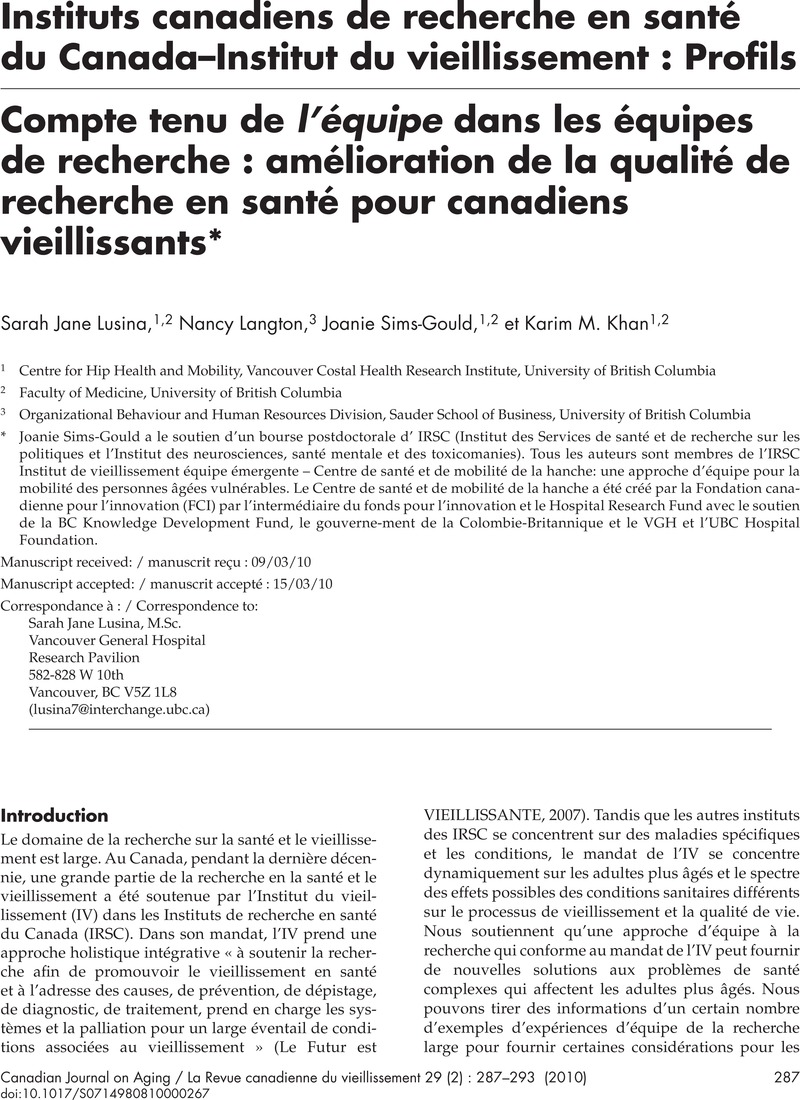No CrossRef data available.
Article contents
Compte tenu de l’équipe dans les équipes de recherche : amélioration de la qualité de recherche en santé pour canadiens vieillissants*
Published online by Cambridge University Press: 04 June 2010
Abstract

- Type
- Canadian Institutes of Health Research–Institute of Aging: Profiles/Instituts canadiens de recherche en santé du Canada–Institut du vieillissement : Profils
- Information
- Canadian Journal on Aging / La Revue canadienne du vieillissement , Volume 29 , Issue 2 , June 2010 , pp. 287 - 293
- Copyright
- Copyright © Canadian Association on Gerontology 2010
Footnotes
Joanie Sims-Gould a le soutien d’un bourse postdoctorale d’ IRSC (Institut des Services de santé et de recherche sur les politiques et l’Institut des neurosciences, santé mentale et des toxicomanies). Tous les auteurs sont membres de l’IRSC Institut de vieillissement équipe émergente – Centre de santé et de mobilité de la hanche: une approche d’équipe pour la mobilité des personnes âgées vulnérables. Le Centre de santé et de mobilité de la hanche a été créé par la Fondation canadienne pour l’innovation (FCI) par l’intermédiaire du fonds pour l’innovation et le Hospital Research Fund avec le soutien de la BC Knowledge Development Fund, le gouverne-ment de la Colombie-Britannique et le VGH et l’UBC Hospital Foundation.


